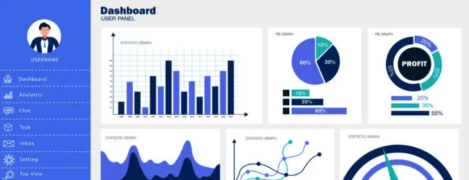Introduction to Marketing Attribution

Marketing is the engine of growth for any SaaS business, but how do you determine which parts of that engine are firing on all cylinders? For SaaS companies like herdr.io, where customers interact with multiple touchpoints—ads, newsletters, organic content, and more—answering this question is crucial. Enter marketing attribution: the practice of identifying which marketing efforts contribute to your desired outcomes, from generating leads to acquiring loyal customers.
In this article, we’ll introduce you to the world of marketing attribution, its importance for SaaS success, and common challenges. By the end, you’ll see why attribution is your key to unlocking smarter decision-making and scalable growth.
What is Marketing Attribution?
Marketing attribution is the process of assigning credit to the touchpoints in a customer’s journey that lead to a conversion, such as signing up for a free trial, scheduling a demo, or becoming a paying customer.
For example, a potential herdr.io customer might:
- See a LinkedIn ad.
- Visit the website blog.
- Subscribe to the email newsletter.
- Click a Google Search Ad and sign up for a trial.
Each of these steps played a role in the conversion. Attribution answers the question: Which step (or combination of steps) deserves the credit?
Why Does Marketing Attribution Matter?
Attribution is more than just assigning credit—it’s about understanding what works and what doesn’t in your marketing efforts. Here’s why it matters:
1. Optimize Your Marketing Spend
Attribution helps you identify which channels deliver the best ROI. If your LinkedIn Ads drive more trial signups than your paid newsletters, you’ll know where to focus your budget.
2. Align Marketing and Sales Teams
Attribution creates clarity around how marketing efforts impact the sales pipeline, fostering collaboration and reducing friction between teams.
3. Improve Customer Experiences
By understanding the buyer journey, you can optimize touchpoints to make the path to conversion smoother and more compelling.
4. Scale Confidently
With accurate data on what drives results, you can scale your marketing efforts without guesswork.
Common Attribution Challenges
While attribution is powerful, it’s not without its challenges:
1. Multi-Touch Journeys
In SaaS, customers rarely convert after a single touchpoint. Tracking the entire journey is complex.
2. Data Silos
Marketing channels like LinkedIn Ads, newsletters, and blogs generate data in different formats and platforms, making it hard to consolidate.
3. Attribution Bias
Choosing the wrong attribution model can skew your insights, leading to poor decisions. For example, relying solely on last-touch attribution might undervalue earlier interactions like blog visits.
4. Privacy and Tracking Limitations
With growing concerns around privacy, tracking tools (like cookies) may not always capture the full picture.
How Marketing Attribution Works
Attribution involves three key steps:
- Data Collection
Track customer interactions across all your marketing channels using tools like UTM parameters, ad pixels, and analytics platforms. - Attribution Modeling
Choose a model to distribute credit among touchpoints. Common models include:- First-Touch Attribution: All credit goes to the first interaction.
- Last-Touch Attribution: All credit goes to the last interaction.
- Multi-Touch Attribution: Credit is distributed across touchpoints (linear, time-decay, or custom models).
- Analysis and Optimization
Use the insights to adjust your campaigns, allocate budgets effectively, and refine your marketing strategy.
Attribution in Action for herdr.io
Imagine herdr.io runs campaigns across several channels:
- LinkedIn Ads for professional outreach.
- Paid newsletters to tap into niche space tech audiences.
- Facebook Ads for broader reach.
- A website blog for SEO and organic traffic.
Without attribution, it’s impossible to know which channel drives the most trial signups or whether the combination of channels is effective. With attribution, you can measure the performance of each channel, identify synergies, and double down on what works.
What’s Next?
This article is just the beginning of our blog series, Mastering Digital Marketing Attribution for SaaS Success. Next, we’ll dive into the marketing funnel and buyer journey, mapping how potential customers interact with your brand across various touchpoints.
Read Next: Understanding the Marketing Funnel and Buyer Journey →
Stay tuned as we demystify marketing attribution and help you build a data-driven strategy to grow herdr.io. If you’re ready to take control of your marketing performance, you’re in the right place!







